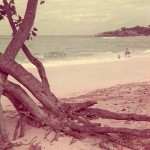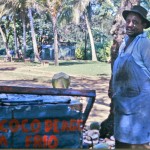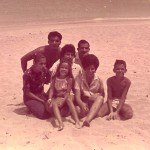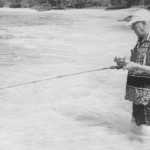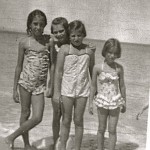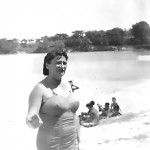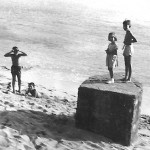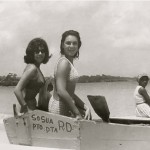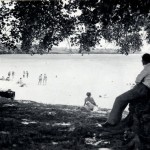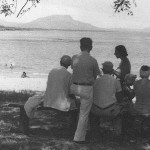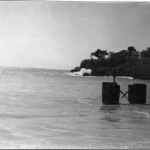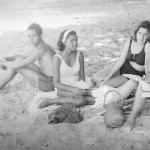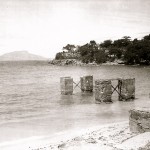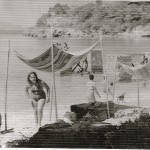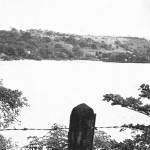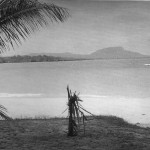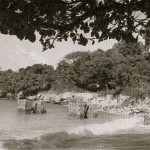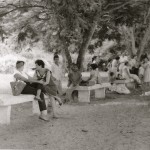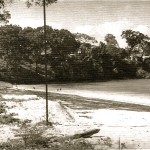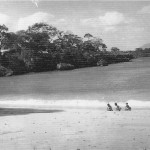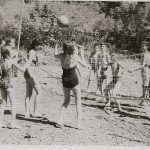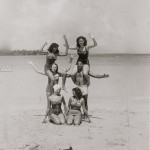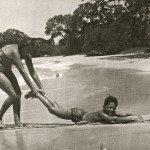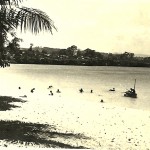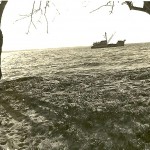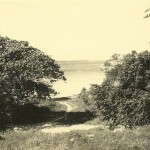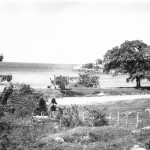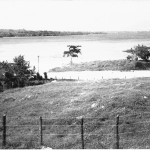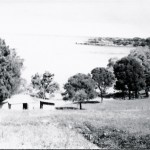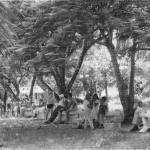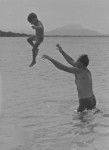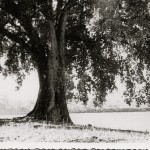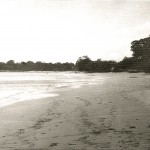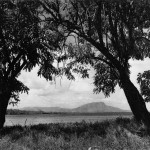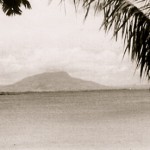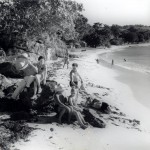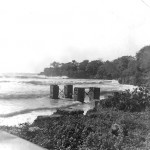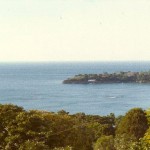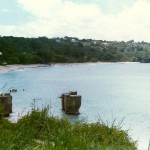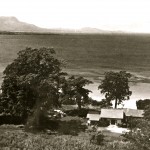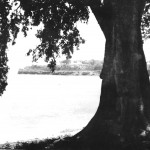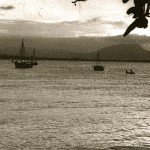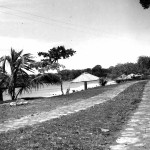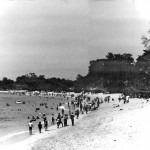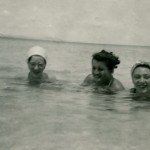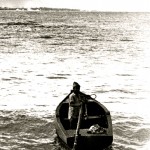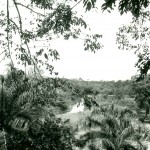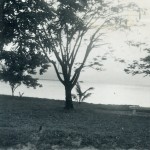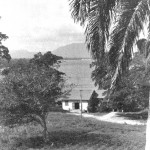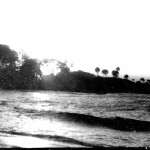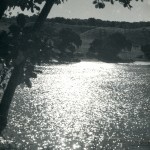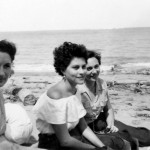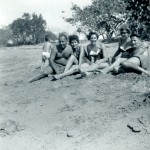The main attraction of Sosúa, and the site around which most of Sosúa’s day-to-day activities revolved, was the beach. Sosúa Beach is a crescent-shaped bay located between “El Batey,” the town built by the Jewish settlers and “Los Charamicos,” an existing town where Dominicans resided before 1940. From the very beginning of the settlement, the beach became the place for gathering. The settlers used the beach for swiming and family reunions, so that children could play together and to relax and speak about the latest events in their lives. Sosúa beach was a truly idyllic setting: the water was placid, almost lake-like, with pure white sand, set against a mountain backdrop and a deep blue sky. A reef, named “Los Cabezos,” was located in the middle of the bay, protected the beach from large waves.
As the beach is quite large, several sites are worth mentioning. “Los Pilotillos” is located on the east side of the beach and was the site of an early 1900s port from where bananas were exported to the USA. The remains of the port, six big cement posts, provided a structure from which children could dive into the sea and play.
“El bañadero,” located in the middle of the beach, had several cement benches and was the main gathering place. It extended to the west until “La mata de uva,” a sea grape tree were children played games like Tarzan and cowboys and Indians. Also “La Islita,” a large algae-covered rock close to the shore, was an exciting place to swim and dive.
“Los Charamicos,” the neighboring Dominican town, was located on the west side of the beach. Because the cliff on that side of the beach was very rocky most of the kids stayed away from there.
“Los Cabezos,” the beautiful reef in the middle of the bay, was only visible during low tide. The region surrounding “Los Cabezos” had many coral, fish, and algae that lived together in a strange but wonderful harmony. However, it was risky to swim so far out because of sharks.
The Sosuans also enjoyed the many different type of trees that provided shade. “Moreno,” a coconut seller, would climb the coconut palms for their fruit, open them with his machete, and then sell them to beach-goers. During the summer he would also sell “limoncillos,” a lychee-like fruit with a tart taste.
PHOTO GALLERY
- Middle section of the beach after a storm
- Moreno selling coconuts
- Settlers’ children at the beach
- Fishing after a storm
- Fanny Wachsmann, Sonja Topf, Ruth Cohnen, Carie Papernik at the beach
- Alice Strauss at the beach
- Carie and Jackie Papernik at Los Pilotillos
- Unknown and Sonja Topf on a fishing boat
- Beach on a beautiful day
- Settlers at the beach – middle section
- Los Pilotillos after a storm
- Aerial view of the beach
- Loma Isabel de Torres
- Sosuans at beach
- Los Pilotillos
- Los Pilotillos
- View from hill above the beach
- The beach
- Los Pilotillos – East side of the beach
- Sosuans enjoying the shade
- West side of the beach
- West side of the beach
- Playing volleyball at the beach
- Sosua beach – Summer camp with Aaron Kanonitz (foreground)
- Unknown settlers at Sosua beach
- Hanna and Fritzi Rosenzweig playing at Sosua beach
- Middle section of the beach
- Navy ship at the beach
- Navy ship at the beach
- Trail to the beach
- Old Sosúa road
- View from hill above the beach
- View from hill above the beach
- Benches at the beach middle section
- Playing
- Playing
- Sosuans making a human tower
- Middle section of the beach
- The “Big Tree”- middle section of beach
- View of west side of the beach
- Beach view with “Isabel de Torres” mountain in back
- Isabel de Torres mountain across Sosúa Bay
- Playa Sosúa east side
- Los Pilotillos
- Sosua beach -View from the hill
- Sosua Beach – Los Pilotillos
- Playa Sosua – View from the hill
- Sosua beach – Big tree
- Boats at Sosua beach
- Sosua beach main road
- Sosua beach
© Copyright Protected

